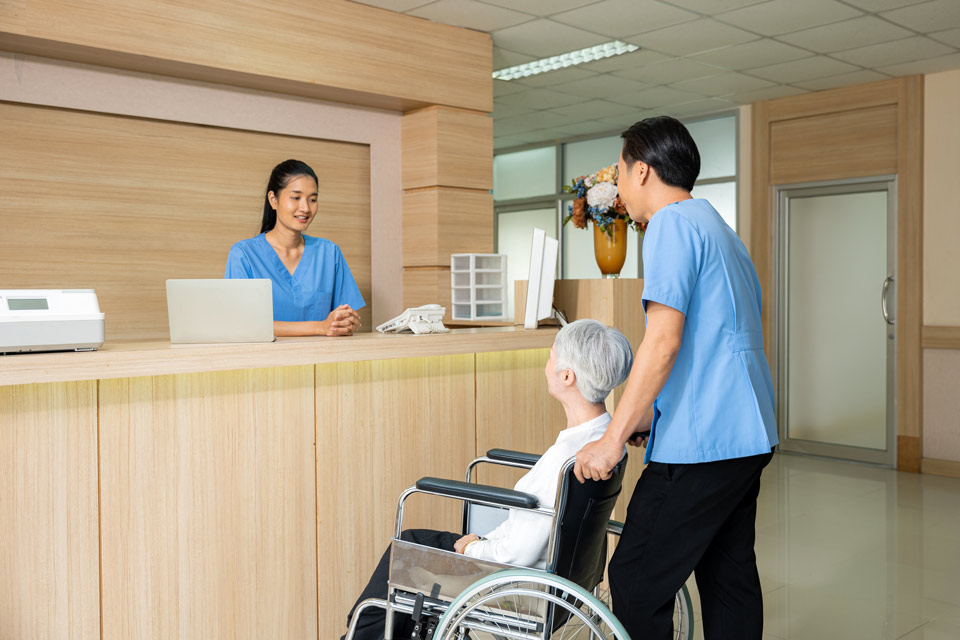Whether you oversee a local clinic or full-service hospital, the quality of patient care and overall health of the staff is greatly impacted by the medical facility’s indoor air quality.
Indoor air quality (IAQ) in medical facilities is a complex and dynamic issue of great importance for patient safety and occupational health purposes. At Simons Heating & Cooling, we know the presence of vulnerable individuals and the types of activities happening inside a medical facility make adequately managing IAQ absolutely critical. Poor IAQ can have detrimental effects on the health of the medical staff and the health of the patients.
Indoor Air Quality Affects the Health of Both Medical Staff and Guests
Because hospitals typically operate on an around-the-clock basis, facilities with poor ventilation systems or old ductwork risk subjecting our healthcare heroes to many invisible health issues. Common health complaints associated with poor indoor air quality in hospitals or other medical facilities include:
- Headaches
- Fatigue
- Dry, irritated eyes and skin
Chemical fumes, large temperature differences between rooms and poor airflow are all common ways that a facility’s indoor air quality can be affected. Proper circulation is vital for minimizing the spread of viruses, and poor air quality overall has been linked to a wide variety of health problems. Ailments range from respiratory issues like allergies and asthma to nosocomial infections; i.e., anything contracted inside a healthcare facility. Indoor air pollution can be such a serious health risk that one-third of deaths from stroke, lung cancer and heart disease are in part due to air pollution.
The U.S. Environmental Protection Agency has established numerous federal air quality regulations, such as the Clean Air Act of 1970. This particular act prioritized equipment found in most hospitals, such as commercial boiler systems. Understanding and regulating common indoor sources of pollutants can help reduce the risk of health concerns. The outdoor air quality, activities performed indoors, occupant density, ventilation practices and residual fumes are all capable of lowering the air quality.
Third-party studies focusing on IAQ in medical facilities are scarce compared to similar studies for residential buildings or other commercial properties like schools. However, we do know several things that are commonly linked to indoor air pollution at hospitals and other healthcare facilities:
- Operating Rooms & Wards: Within a hospital, operating rooms, wards and intensive care units are the most heavily scrutinized due to the critical importance of clean air quality.
- Chemicals: Haphazard use of cleaning and personal care products containing ethylene oxide, glutaraldehyde, formaldehyde or various alcohols may lead to chemical contamination. Anesthetic gases and other chemical agents used in medical procedures should also be handled carefully.
- Aerial Spread: The aerial spread of microbes and pathogens can contaminate a wide range of clinical environments, potentially causing nosocomial infections or work-related respiratory conditions. Air temperature and relative humidity levels are frequently monitored in medical facilities due to the direct association with microbial growth.
The Importance of Good Ventilation at a Medical Facility
At Simons Heating & Cooling, we understand that good ventilation is crucial to any indoor air environment. It’s even more critical at clinics and hospitals.
The presence of volatile organic compounds (VOCs), carbon dioxide (CO2), particulate matter (PM) and other pollutants can negatively affect the health of patients and staff in healthcare facilities. In addition, construction and finishing materials not typically found in such places can also have a negative impact on indoor air quality.
It can be difficult to resolve multiple indoor air quality concerns at the same time, but there are ways to reduce pollutants. Three such strategies include improving ventilation, installing high-efficiency air filtration systems and limiting potential sources of pollution.
Our top solution is the PlasmaPURE air purification system. It uses bipolar ionization to aggravate oxygen electrons, which draws airborne contaminants towards them. These materials clump together until they’re large enough to be captured by filters. This effectively removes particulate matter as well as microorganisms like bacteria and viruses. With a PlasmaPURE system, you can also increase the efficiency of your HVAC system by up to 30%, compared to other IAQ products such as a HEPA filter.
While not as efficient as a PlasmaPURE system, HEPA filtration systems are still another solution for capturing and removing airborne particles, microorganisms and other contaminants. A HEPA filter is specially designed with a highly dense network of fibers. Able to capture the majority of microscopic particles, HEPA filters may remove up to 99.9% of indoor pollutants. They’re even capable of stopping particles smaller than 0.3 microns like viruses and bacteria. Because of this, HEPA-grade filtration could be another great way to protect patients and staff.
Another way to regulate air quality is through the use of Germicidal Ultraviolet (UV) lamps. UV lamps are ideal for preventing the transmission of bacteria and other pathogens due to the sterilizing properties of ultraviolet light. In fact, UV lights have been used for decades to effectively reduce infection rates. Installations have increased in response to the COVID-19 pandemic.
Cleaner Air Means Healthier Hospitals and Clinics
Studies have consistently proven that improving indoor air quality at home, the office or inside a hospital is beneficial to our health and well-being. Simons Heating & Cooling is proud to work with healthcare facilities throughout Upstate New York, helping upgrade their ventilation systems and significantly improve overall indoor air quality.
If your healthcare facility needs a new HVAC system or a higher efficiency replacement, trust our experts to help you select the best option. Give us a call at (518) 955-1051 to request a free consultation.


